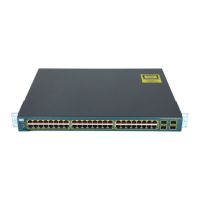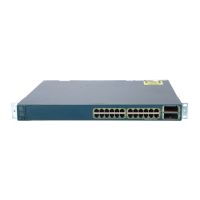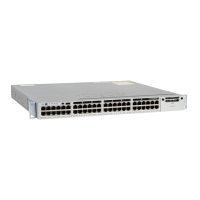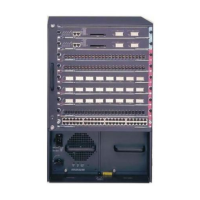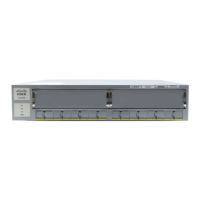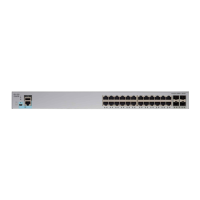5-13
Catalyst 3750 Switch Software Configuration Guide
78-16180-02
Chapter 5 Managing Switch Stacks
Understanding Switch Stacks
The interface-specific configuration of each stack member is associated with the stack member number.
As mentioned in the “Stack Member Numbers” section on page 5-6, stack members retain their numbers
unless they are manually changed or they are already used by another member in the same switch stack.
• If an interface-specific configuration does not exist for that member number, the stack member uses
its default interface-specific configuration.
• If an interface-specific configuration exists for that member number, the stack member uses the
interface-specific configuration associated with that member number.
If a stack member fails and you replace with it with an identical model, the replacement switch
automatically uses the same interface-specific configuration as the failed switch. Hence, you do not need
to reconfigure the interface settings. The replacement switch must have the same stack member number
as the failed switch. For information about the benefits of provisioning a switch stack, see the “Switch
Stack Offline Configuration” section on page 5-7.
You back up and restore the stack configuration in the same way as you would for a standalone switch
configuration. For more information about file systems and configuration files, see Appendix B,
“Working with the Cisco IOS File System, Configuration Files, and Software Images.”
Additional Considerations for System-Wide Configuration on Switch Stacks
These sections provide additional considerations for configuring system-wide features on switch stacks:
• “Switch Clusters and Switch Stacks” section on page 6-14
• “MAC Addresses and Switch Stacks” section on page 7-22
• “Setting the SDM Template” section on page 8-4
• “802.1x and Switch Stacks” section on page 10-10
• “VTP and Switch Stacks” section on page 14-6
• “Private VLANs and Switch Stacks” section on page 15-5
• “Spanning Tree and Switch Stacks” section on page 17-12
• “MSTP and Switch Stacks” section on page 18-6
• “DHCP Snooping and Switch Stacks” section on page 21-6
• “IGMP Snooping and Switch Stacks” section on page 23-6
• “Port Security and Switch Stacks” section on page 24-15
• “CDP and Switch Stacks” section on page 25-2
• “SPAN and RSPAN and Switch Stacks” section on page 27-10
• “ACLs and Switch Stacks” section on page 31-6
• “EtherChannel and Switch Stacks” section on page 33-9
• “IP Routing and Switch Stacks” section on page 34-3
• “HSRP and Switch Stacks” section on page 35-2
• “Multicast Routing and Switch Stacks” section on page 36-8
• “Fallback Bridging and Switch Stacks” section on page 38-3

